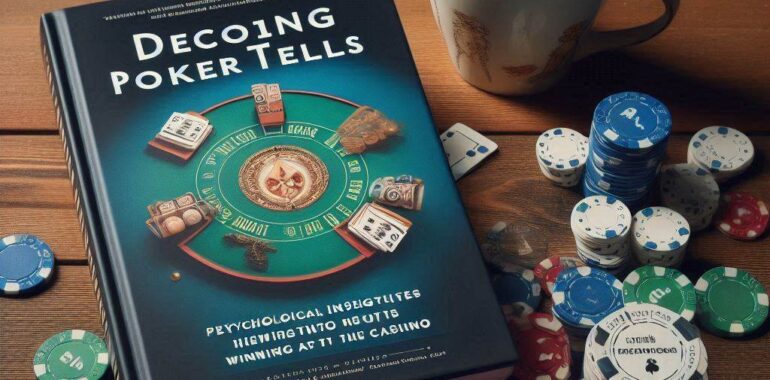Decoding Poker Tells: Psychological Insights for Winning at the Casino

Decoding Poker Tells: Psychological Insights for Winning at the Casino
Poker is not merely a game of cards; it’s a psychological battle where understanding the nuances of human behavior can provide a significant edge. “Tells”—subtle changes in a player’s behavior or demeanor which can reveal information about their hand—are an integral part of this psychological warfare. Here,Poker Tells Psychological Insights we explore how to decode these tells and gain insights that can lead to winning strategies at the casino poker table.
Understanding Poker Tells
Poker tells can be broadly categorized into two types: physical and verbal. Physical tells include any change in body language, such as facial expressions, hand movements, or posture adjustments. Verbal tells involve changes in speech patterns, tone, or the content of what a player says. Both types of tells can provide crucial information about a player’s intentions, strength of hand, and overall strategy.
Physical Tells: Reading the Subtle Signals
- Facial Expressions: Smiles, frowns, or even a blank expression can indicate a player’s comfort or discomfort with their hand. For example, a forced smile might suggest a bluff,Poker Tells Psychological Insights while genuine smiles might indicate a strong hand.
- Eye Movements: Players often look away or avoid eye contact when bluffing, fearing their eyes may give them away. Conversely, a player staring intently at the flop might be calculating pot odds or considering a significant decision.
- Hand and Arm Movements: Nervousness can manifest in fidgeting or shaking hands. Smooth, confident movements might indicate a good hand, whereas shaky hands might betray anxiety or uncertainty.
- Posture: Leaning in could show interest or confidence; leaning back might indicate disinterest or a weak hand.
Verbal Tells: The Art of Listening
- Changes in Tone: A sudden change in vocal pitch can suggest excitement or nervousness. A calm, even tone might be used to conceal a strong hand.
- Speech Patterns: Rapid speech might indicate a bluff, while a deliberate, thoughtful tone could suggest a player is holding a strong hand.
- Content of Speech: Overly explaining one’s actions or unnecessarily engaging in conversation can be a sign of deception. Conversely, silence might indicate a player is focused and confident in their hand.
Psychological Tactics for Using Tells
- Control Your Own Tells: Just as you watch for tells in others, be aware of your own. Consistent behavior regardless of hand strength can help mask your intentions.
- Create False Tells: Once you’re aware of your own tells, you can begin to use them to mislead opponents. For instance, acting hesitant or unsure when you have a strong hand can induce opponents to bet more aggressively.
- Focus on Reliable Tells: Not all tells are equally reliable. Focus on tells that you have observed consistently aligning with specific behaviors or patterns in a player’s strategy.
Conclusion
Decoding poker tells requires keen observation, a deep understanding of human psychology, and the ability to remain composed under pressure. While not infallible, mastering the art of reading and using tells can significantly enhance your gameplay, turning poker into not just a game of chance, but a profound psychological duel. Whether you are a novice looking to improve your game or a seasoned player aiming to refine your strategies, understanding tells is an invaluable skill in the arsenal of any serious poker player.
Read More:Cerita Dari Meja Poker: Kisah-kisah Menarik Para Pemain Kasino